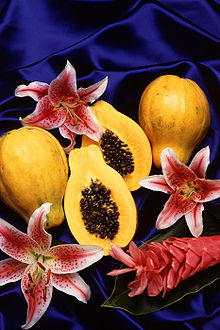I cringe at people who claim that all things "natural" are safe.
Because not everything synthetic or manufactured is unsafe, and not everything natural is safe. Take for example essential oils and carrier oils. Such ingredients derived from plants have benefits and unwanted effects, just like other "chemicals" - and it is the way these ingredients are mixed which determine their performance.
Today, I'll be naming a few of the essential and carrier oils which may be dangerous (especially on the hands on unsuspecting DIY-ers or chemical-hating consumers who fail to check their facts).
 |
| I hope lavender is not on the list |
Natural abortifacient
User
/u/valentinedoux from
/r/SkincareAddiction did a good job of enumerating herbs and oils which may be abortaficient. Anise, Basil, Bay, Bitter Melon, Camphor, Cinnamon, Coriander, French Lavender, Lavender Cotton, Lemongrass, Neem, Nutmeg, Parsley, Peppermint, Sage, Rosemary, Thyme and Wormwood are some which I've heard of.
Essential oils for aromatherapy (Not!)
According to a review on toxicology of essential oils written by Anthony Dweck, consultant on natural products for cosmetics, toiletries and pharmaceuticals, some essential oils may be dangerous even for aromatherapy. Bitter almond oil, Armoise oil, Boldo leaf, Calamus oil, Chenopodium oil, Croton oil, Horseradish oil, Lanyana oil, Mustard oil, Parsley herb oil, Pennyroyal oil, Perilla oil, Savin oil, Sassafras oil, Summer Savoury oil, Tansy oil, Wintergreen oil and Wormwood oil are unsafe for aromatherapy purposes.
Irritating essential oils
If you're the type to be irritated with chemicals such as SLS and SLES which are irritants for some, you should also be aware of irritating essential oils which may be in your skincare or toiletries. Bay oil West Indian, Clove oil, Coriander oil, Ho oil, Kuromoji oil, Melissa oil, Origanum oil, Pimento berry and leaf
oils, Rosewood oil, Summer Savoury oil, Winter Savoury oil, Tagetes oil, Tea Tree oil, Thyme oil and Turpentine oil can mess with your skin, so it's best to careful with these in your skincare.
Long story turned short, it's best to leave the formulation in the hands of capable professionals - whichever natural or synthetic ingredient is used.
Part 2 of this post will go over essential oils which may be phototoxic and carcinogenic. Stay tuned!
Source:
Dweck, A. (2009). 'Toxicology of essential oils reviewed' Available at:
http://www.zenitech.com/documents/Toxicity_of_essential_oils_p1.pdf (Accessed Dec 11 2013).


















